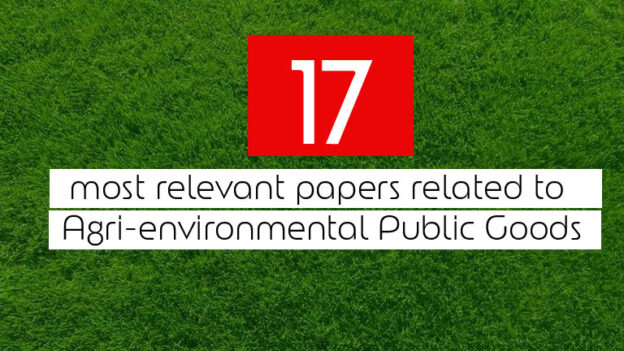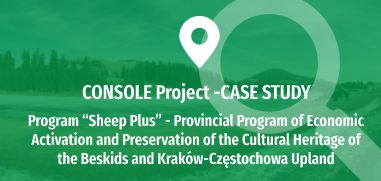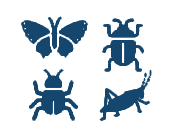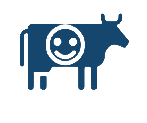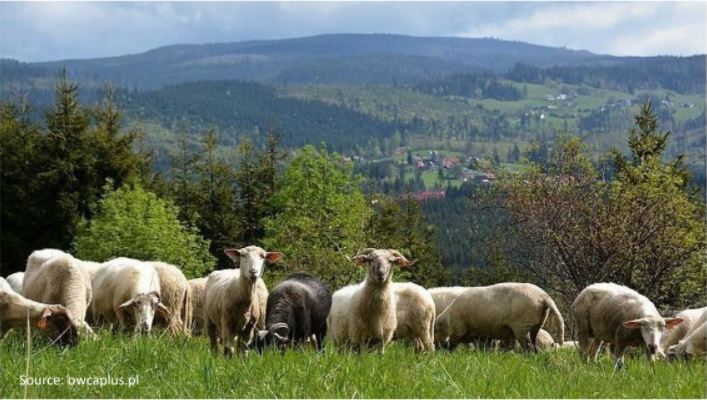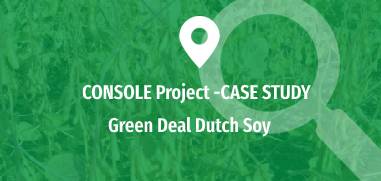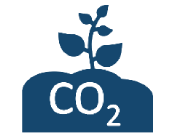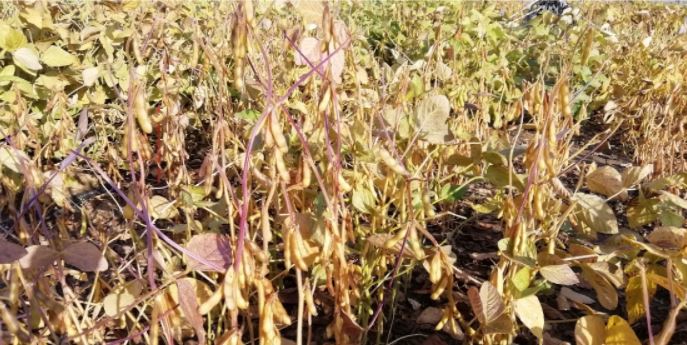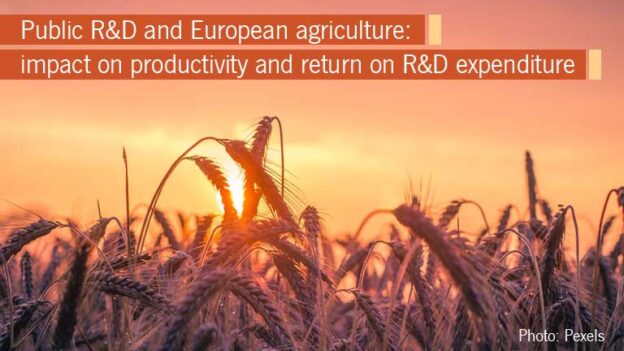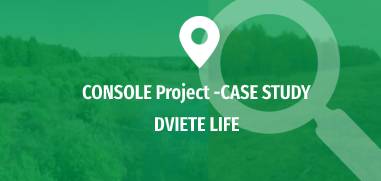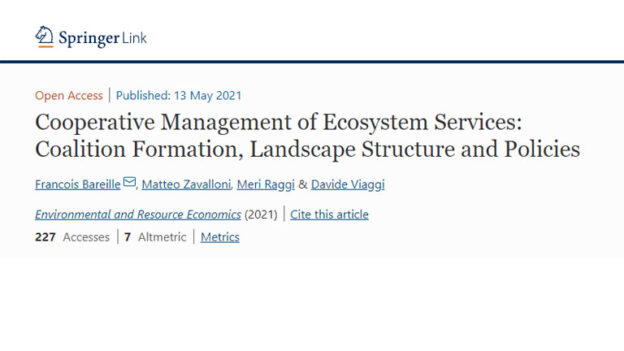Today we present a recommendation made on social networks by the leader of the CONSOLE project, Davide Viaggi.
In volume 107 of the scientific journal “Land Use Policy”, published by the ScienceDirect, has highlighted the 17 most relevant scientific articles related to the public goods provided by agriculture and forestry to design more efficient governance mechanisms.
And it is also noteworthy that it has been edited by Davide Viaggi, Meri Raggi, Anastasio J. Villanueva and Jochen Kantelhardt, which makes us happy for the proximity.
1.1 Provision of public goods by agriculture and forestry: Economics, policy and the way ahead
(Davide Viaggi, Meri Raggi, Anastasio J. Villanueva, Jochen Kantelhardt)
The objective of this initial journal article is to lay the foundations for this special issue on Public Goods in Agriculture and Forestry; offering a summary of the articles included in this volume of the publication and generating ideas for future publications.
Likewise, these authors point out to the need to investigate more deeply the micro decision-making mechanisms, the creation of value and the coordination between the actors.
1.2 Exploring the commodification of biodiversity using olive oil producers’ willingness to accept
(Melania Salazar-Ordóñez, Macario Rodríguez-Entrena, Anastasio J. Villanueva)
These researchers emphasize the need to create new innovative instruments to complement current schemes for the betterment of biodiversity; among which the commodification of biodiversity stands out. This research aims to estimate the compensation that farmers need to carry out environmentally friendly practices aimed at incorporating the provision of biodiversity in food production.
1.3 Drivers of farmers’ willingness to adopt extensive farming practices in a globally important bird area
(Mikołaj Czajkowski, Katarzyna Zagórska, Natalia Letki, Piotr Tryjanowski, Adam Wąs)
Agri-environmental schemes are also important tools of land use management policies in ecologically valuable river valleys. The researchers therefore use the case of Biebrza Marshes, a complex of wetlands and one of the largest wildlife refuges in Europe, which is located in northeast Poland.
1.4 Farmers’ perception of co-ordinating institutions in agri-environmental measures – The example of peatland management for the provision of public goods on a landscape scale
(Kati Häfner, Annette Piorr)
The authors assess how farmers perceive the various coordinating institutions as well as agricultural and farmer characteristics determine differences in perception. To do this, the authors apply a quantitative data analysis using a survey that includes a discrete choice experiment on the willingness of peatland farmers to participate in a hypothetical agri-environmental measure aimed at climate-friendly peatland management.
1.5 Private landowners’ preferences for trading forest landscape and recreational values: A choice experiment application in Kuusamo, Finland
(Liisa Tyrväinen, Erkki Mäntymaa, Artti Juutinen, Mikko Kurttila, Ville Ovaskainen)
This study focused on the possibilities of enhancing the scenic and recreational values of private forests for nature tourism in Finland. More specifically, they studied the attitudes of forest owners and their willingness to participate in a Payments for Ecosystem Services (PES) initiative called Trade on Landscape Value and Recreation. In addition, the acceptability of forest management alternatives that underpin landscape qualities, the relative importance of different characteristics of the Recreational and Landscape Value Trade to landowners, and the magnitude of overall compensation claims from landowners were also investigated alternative models of Recreational and Landscape Value Trade.
1.6 Hedonic valuation of harmful algal bloom pollution: Why econometrics matters?
(Abdel Fawaz Osseni, Francois Bareille, Pierre Dupraz)
Harmful algal bloom (HAB) pollution is a major environmental threat in Brittany, affecting the well-being of the local population. The researchers estimated the willingness to pay (WTP) to reduce HAB contamination levels using the hedonic pricing method for the particular case of the rural Breton housing market between 2010 and 2012.
1.7 Importance of forest landscape quality for companies operating in nature tourism areas
(Erkki Mäntymaa, Liisa Tyrväinen, Artti Juutinen, Mikko Kurttila)
Researchers study entrepreneurs’ attitudes towards the importance of environmental comforts and evaluations of potential improvements in forest landscapes for their business under the proposed Payments for Ecosystem Services mechanism, called Trade in Landscape Value and Recreation.
1.8 Moving (back) to greener pastures? Social benefits and costs of climate forest planting in Norway
(Endre Kildal Iversen, Henrik Lindhjem, Jette Bredahl Jacobsen, Kristine Grimsrud)
Norway is considering a national afforestation program for greenhouse gas sequestration in recently abandoned semi-natural grasslands. However, the program may have negative impacts on the aesthetics of the landscape and biodiversity. Therefore, the researchers conducted an experimental nationwide election survey to estimate non-commercial values, combined with secondary data on program costs and other impacts, to derive the net social return on land-use scenarios.
1.9 Public goods in rural areas as endogenous drivers of income: Developing a framework for country landscape valuation
(Bazyli Czyżewski, Anna Matuszczak, Andrzej Czyżewski, Agnieszka Brelik)
Rural areas are where many environmental and cultural public goods occur, creating a country landscape. Its agroecological infrastructure offers things that people value directly, such as food, fiber and energy, but the market fails when it comes to valuing public goods. That’s why, indirect valuation methods are used, but these encounters many methodological problems. The objective of this study is to create a conceptual framework for the economic rent valuation method (ERV), which estimates the economic rent resulting from the random endogenous influences of public goods on the factors of production in rural areas.
1.10 Farmland abandonment, public goods and the CAP in a marginal area of Italy
(Matteo Zavalloni, Riccardo D’Alberto, Meri Raggi, Davide Viaggi)
The abandonment of the land is affecting several areas of Europe and for some years the problem has become a political objective. However, the consequences of land abandonment are difficult to assess, since both agriculture and land abandonment are linked to social-environmental public goods, but the relationship between the provision of public goods and land use, as well as its social value, is not clear and is debated.
1.11 Assessment of real and perceived cost-effectiveness to inform agricultural diffuse pollution mitigation policies
(Francisco Alcon, María Dolores de-Miguel, José Miguel Martínez-Paz)
Diffuse water pollution is a major problem in many agroecosystems, especially in irrigated areas linked to ecosystems of high ecological value. Pollution reduction policies are often rejected by farmers because of their impact on farm profitability. Therefore, the objective of this publication is to design an evaluation procedure for an implementation program of agricultural measures aimed at mitigating diffuse pollution, combining the relative effectiveness between the measures with the perceived and real cost of the measures.
1.12 A fuzzy cognitive mapping approach for the assessment of public-goods governance in agricultural landscapes
(Stefano Targetti, Lena L. Schaller, Jochen Kantelhardt)
In this study, the researchers apply a participatory approach based on the Fuzzy Cognitive Mapping technique in evaluating different policy mechanisms, including improved monetary incentives and the potential for improved agricultural landscape governance design. This analysis specifically assesses the interactions between rural society, public goods and policies in different locally relevant economic and social settings (Marchfeld, an intensive agriculture case study area in eastern Austria).
1.13 From elite-driven to community-based governance mechanisms for the delivery of public goods from land management
(Tomáš Ratinger, Klára Čamská, Jaroslav Pražan, Miroslava Bavorová, Iva Vančurová)
Various non-governmental initiatives have emerged in the Czech Republic in recent years with the aim of organizing the provision of public goods; although they are usually initiated by activists and take forms such as foundations or trust funds, but sometimes they are presented as collective actions of communal interests. In this scientific article we present four cases of such efforts and show their common and contrasting characteristics in light of their relevance to local needs and their possible integration into the future framework of the CAP.
1.14 Policy instruments for environmental public goods: Interdependencies and hybridity
(KL Blackstock, P. Novo, A. Byg, R. Creaney, … KA Waylen)
Researchers point out to the need for a deeper exploration of the interplay between policy instruments and consequences for the management of public goods in agricultural and / or forest landscapes. Therefore, the researchers explored how policy instruments influence the mix of public goods provided by Scotland’s agricultural and forested areas, drawing on empirical and desktop research.
1.15 The legitimacy of result-oriented and action-oriented agri-environmental schemes: A comparison of farmers ‘and citizens’ perceptions
(Annukka Vainio, Annika Tienhaara, Emmi Haltia, Terho Hyvönen, … Eija Pouta)
In this research, the authors point out that perceptions of farmers and citizens about the legitimacy of current action-oriented Agri-environmental schemes and the proposed results-oriented ones (AES) are poorly understood. Therefore, this study analysed such perceptions in the context of Finnish citizens and farmers.
1.16 Vulnerability of British farms to post-Brexit subsidy removal, and implications for intensification, extensification and land sparing
(David Arnott, David R. Chadwick, Sophie Wynne-Jones, David L. Jones)
The UK’s exit (BREXIT) from the European Union will force the development of a new agricultural policy in the UK, which will likely see the removal of direct financial support to farmers. Therefore, in this study, combined data from agricultural surveys and rural payments were used to assess the degree of dependence on Pillar 1 payments, based on a sample of 24,492 (i.e. 70%) of the farms in Welsh.
1.17 Do differential payments for agri-environment schemes affect the environmental benefits? A case study in the North-Eastern Italy
(Fabio Bartolini, Daniele Vergamini, Davide Longhitano, Andrea Povellato)
Although promoting sustainable agricultural systems, maintaining biodiversity and establishing measures to counteract climate change are the clear objectives of the future Common Agricultural Policy (CAP); there is still uncertainty about its implementation. In this document, they estimated a composite indicator to track changes at the farm level and assess the impacts of Agri-environmental climate schemes (AECS) on change in management intensity.
